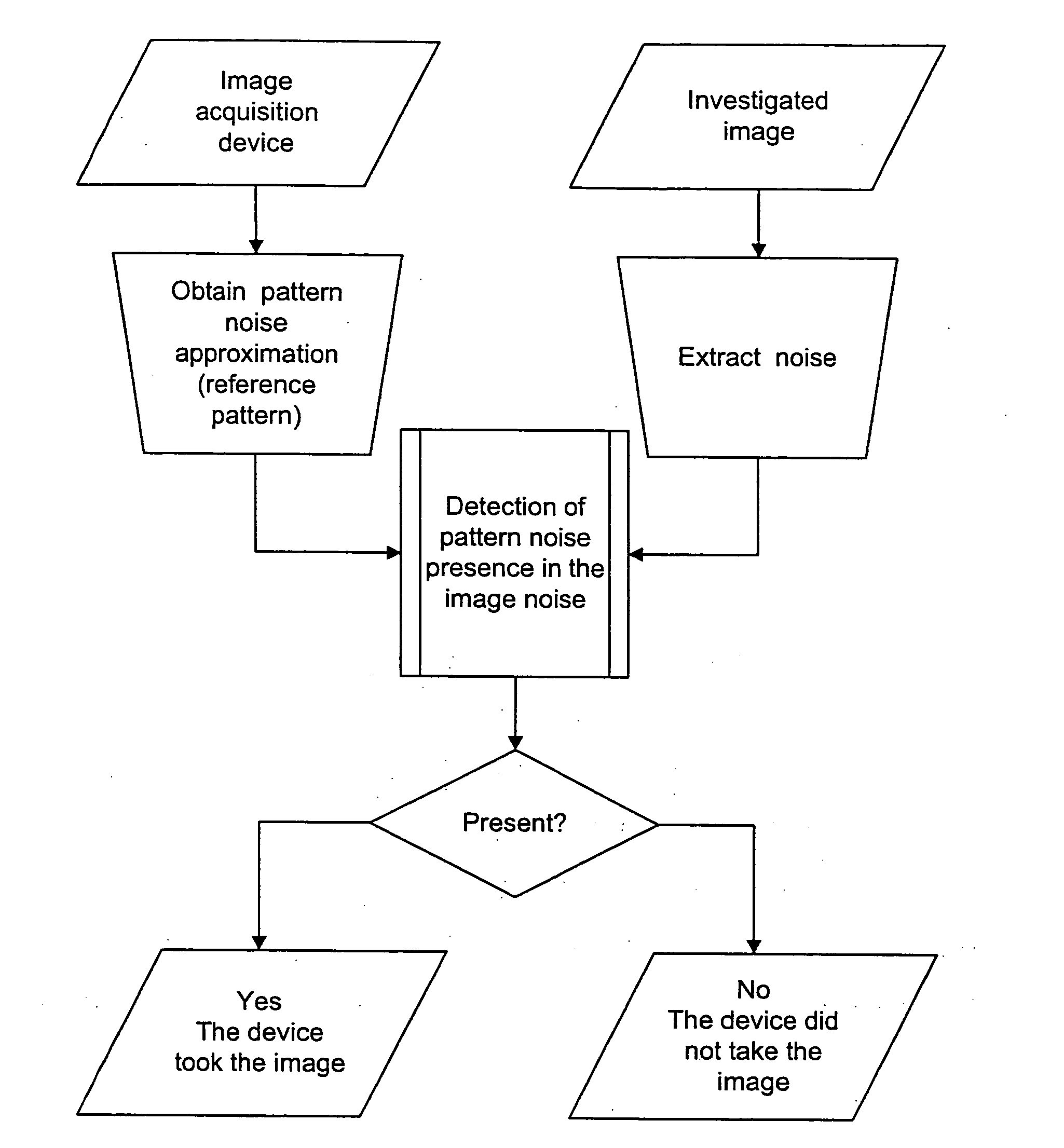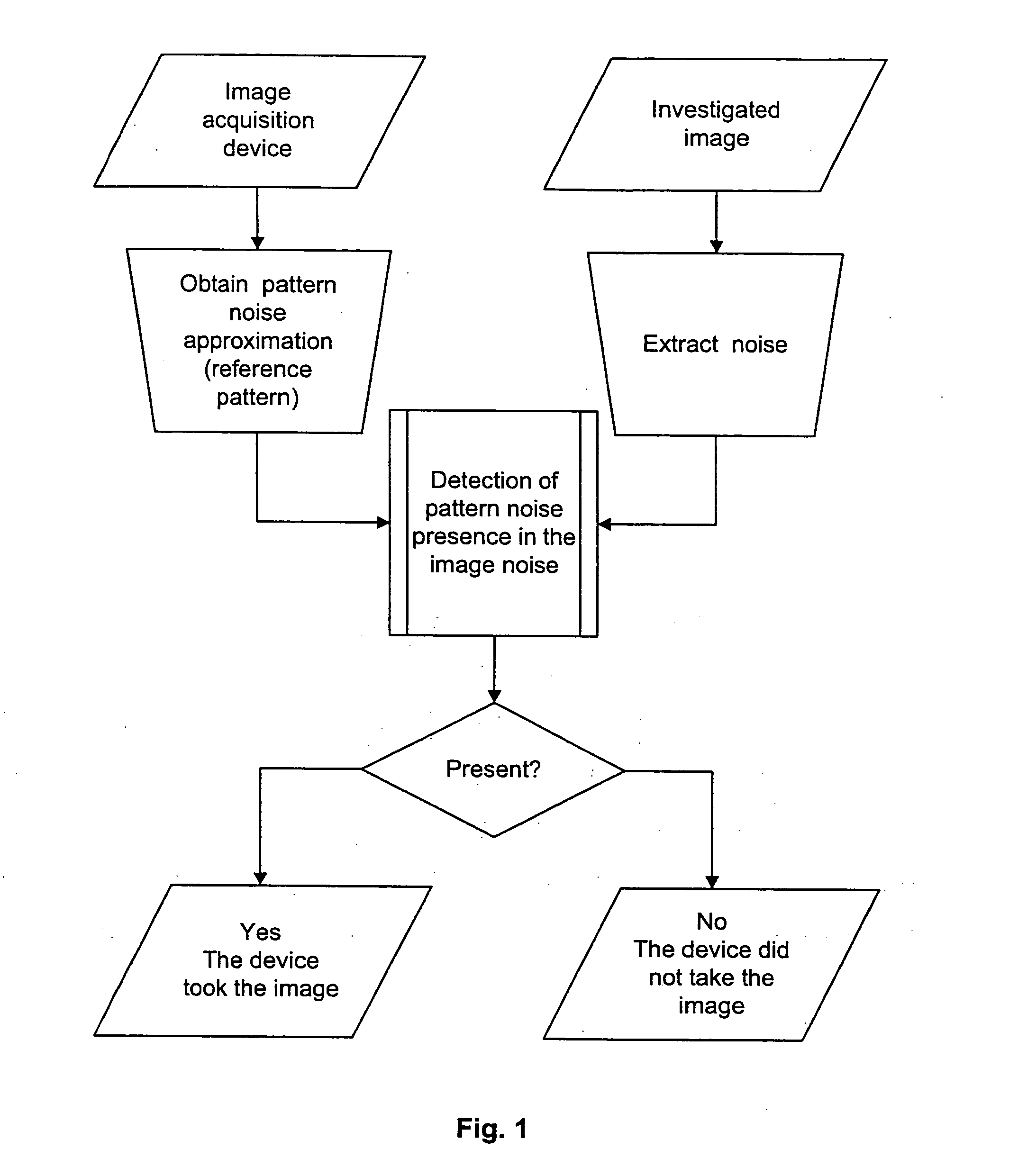Method and apparatus for identifying an imaging device
a technology of imaging device and identification method, which is applied in the field of method and apparatus, can solve the problems of significant limitations and/or limited reliability of all prior approaches to identifying the device that acquired a particular image, loss during image processing, and inability to observe pixel defects in every scene, etc., and achieve the effect of reliable identification of the devi
- Summary
- Abstract
- Description
- Claims
- Application Information
AI Technical Summary
Benefits of technology
Problems solved by technology
Method used
Image
Examples
Embodiment Construction
[0018]The completely new approach of the present invention to identify an individual acquisition device from an image makes use of a pattern noise from the imaging sensor (Holst, G. C., CCD Arrays, Cameras, and Displays, 2nd edition (JCD Publishing & SPIE Press, USA, 1998)). Slight imperfections in the manufacturing of the imaging sensor and inhomogeneities of silicon wafers cause the pattern noise, which is present in all types of imaging sensors (CCD, CMOS, JFET) currently in use. This pattern noise is automatically and necessarily superimposed on each image the sensor acquires, similar to the process by which a gun barrel imposes specific scratches on a bullet fired from it.
[0019]Referring to FIG. 1, the present invention shows whether or not a particular device acquired a given image. An approximation to its pattern noise (the device's reference pattern noise) is obtained for each suspected device. Ways to do that are presented below at paragraphs [033]-[036]. To detect a simila...
PUM
 Login to View More
Login to View More Abstract
Description
Claims
Application Information
 Login to View More
Login to View More - R&D
- Intellectual Property
- Life Sciences
- Materials
- Tech Scout
- Unparalleled Data Quality
- Higher Quality Content
- 60% Fewer Hallucinations
Browse by: Latest US Patents, China's latest patents, Technical Efficacy Thesaurus, Application Domain, Technology Topic, Popular Technical Reports.
© 2025 PatSnap. All rights reserved.Legal|Privacy policy|Modern Slavery Act Transparency Statement|Sitemap|About US| Contact US: help@patsnap.com



